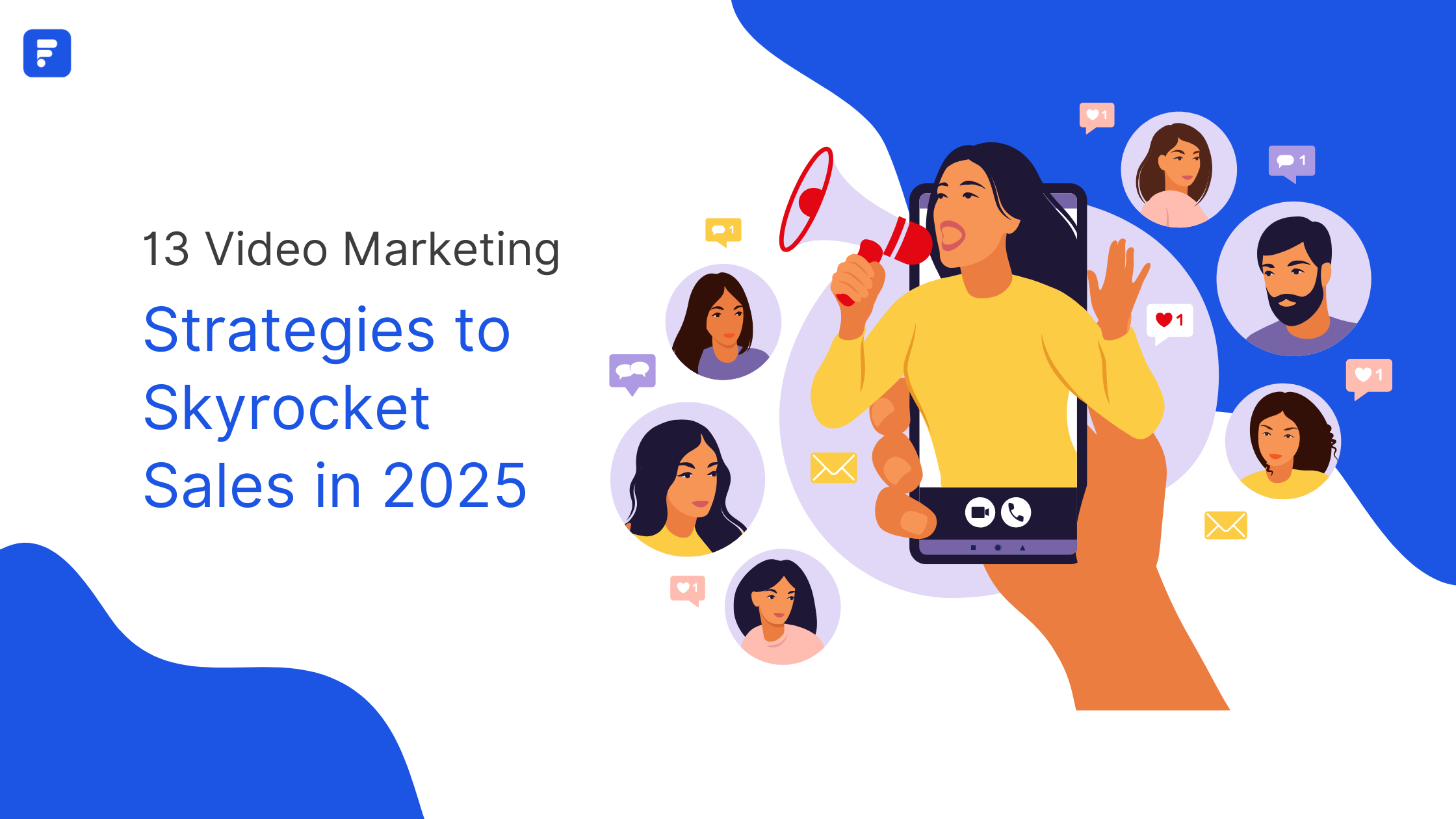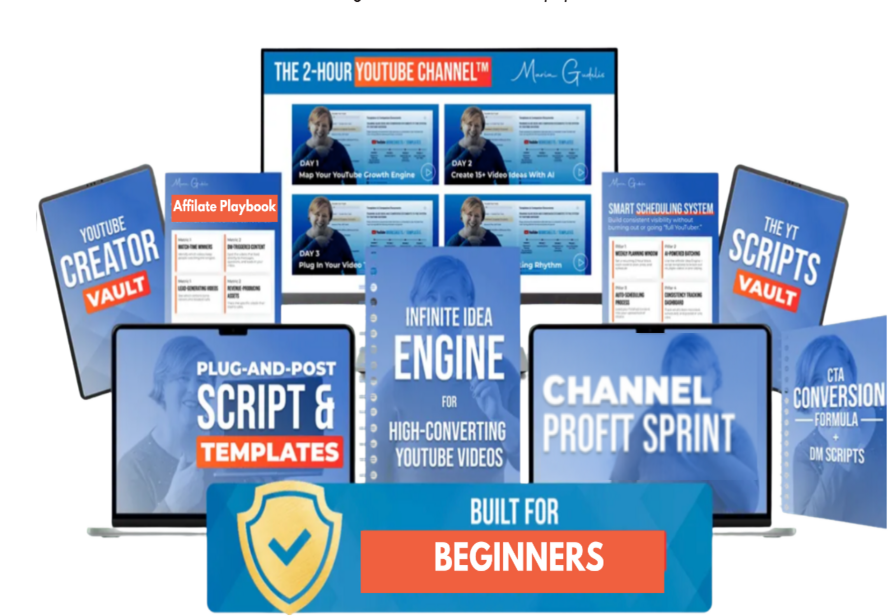13 Video Marketing Strategies to Skyrocket Sales in 2025

Strong 8k brings an ultra-HD IPTV experience to your living room and your pocket.
Introduction
The type of content that sells now is short, quick, and easy to understand. This is evident with the popularity of formats like Instagram Reels, YouTube Shorts, and even WhatsApp Stories. Marketers and business owners realize this and are using video marketing in their efforts to strengthen their brand position online.
Video content helps a potential buyer make a decision quickly. Rather than them having to read about it, a video is easier to consume. For example, would you spend 15 minutes researching and reading reviews about a new pair of earphones to buy or just watch a quick two to five minute video on it? Using video content along with text content is hence highly recommended in your marketing efforts and strategies. And it’s not just us saying it. 78% of marketing professionals have admitted that videos have helped with their sales.
In this article let us take a look at some video marketing strategies you can use to skyrocket your sales this year.
Why Video Marketing Matters More Than Ever in 2025
As mentioned earlier the most popular type of content being consumed online is now video. Online videos reach an audience of over 92% worldwide. And this number is only going to rise. As content is created, the gap to fill its consumption gets bridged.
And videos can be of multiple types depending on your use case. Short-form videos can be easily used for promotions, ads, showing off glowing reviews from customers, and so on. Whereas long-form video content can be used to produce accompaniments to case studies, full-fledged testimonials, and even unboxing or product showcase videos. You can use the short form videos to hook your users in or get them to visit your website. And then, you can use the long-form videos to further seal the deal and build trust with them.
And all of this does not require any specialized skillsets or talent. It can literally all be automated and produced in a couple of hours a day by using AI and AI agents. They can help you right from the creation of the script for the video to the visuals for the video and even a voiceover for it.
13 Video Marketing Strategies to Increase Sales
Let us now get to the good part. The actual video marketing strategies you are going to need to know.
1. Use Video Testimonials to Build Trust
Video testimonials build trust because they have real people in them who are sharing their experiences with your product or service. Unlike testimonials or reviews that just have text in them, videos capture facial expressions, tone of voice, and body language. This helps convey a genuine satisfaction and build social proof better.
Some of the best practices to collect them would be to have clear prompts and instructions on what to say. Additionally to provide the reviewer with a good tool or software to collect the video. There are many great testimonial collection tools out there. You can check out a comparison here.
2. Optimize for Short-Form Video Platforms
Keep the videos you collect or produce under two minutes as much as possible. Or even if you have long-form videos that run over five minutes, try to break it down into multiple segments within the video. This can help you edit and repurpose the videos as shortform content.
This is primarily because sites like TikTok, Instagram, Facebook, etc. push and promote short-form content a lot. And you as a business owner must take advantage of this. The algorithm can be gamed if you know how to game it.
3. Leverage AI-Generated Videos
AI agents and software can assist in making video testimonials easier by writing scripts, editing videos. All you have to do is know how to prompt it right. These tools also save your time, money, and energy. Which you can spend elsewhere. Another advantage to AI video production is the fact that it can help maintain consistency as well.
However, AI content has its pros and cons. The good thing is that it is fast, cheap, and you can make lots of content quickly. The bad is that it might not feel as real or emotionally connected with your audiences. And in certain cases audiences might even trust it less since it is clearly AI-generated. Pick your platform wisely and choose where to show AI content and where you want human made content.
4. Personalize Videos for Different Audience Segments
Personalization can further conversion by making your audience feel like they’ve been addressed directly. And makes them feel understood better as well. Why do so many video testimonials use the viewer’s name and their needs and explain their goals? It is for this exact reason. The fact that it shows potential new customers that any and every need is addressed by the company or product.
Some nice examples include,
- Barclays Digital Eagles Initiative: The Barclays Digital Eagles have been helping care home residents with digital skills.
- Spotify Wrapped: These are not testimonials exactly but personalized recap videos. It became very popular with their user base and other brands started copying them.
5. Add Interactive Elements to Your Videos
What if you want to up the stakes when it comes to viewing your video content? We can make it a more exciting and entertaining experience. And this is done by engaging with the audience. Use shoppable videos that allow viewers to directly click on the product in the video, or interactive quizzes embedded throughout that can help determine if the product is for them. Having the right CTAs will guide viewers to more steps ahead like booking a demo with you or even signing up for a trial or free version.
Several platforms support these interactive features:
- Videoask
- Wistia
- Brightcove
- Vimeo
6. Optimize Videos for SEO
Use the appropriate keywords by doing SEO research in your descriptions, meta tags, titles, and captions or scripts. Since scripts are also translated as transcripts on platforms like YouTube they can help with visibility. SEO is very important when you have unique offerings or services that not everyone provides. As this can help you greatly capitalize on how much you stand out from your competitors.
7. Repurpose Video Content for Multiple Platforms
Let us say you have a lot of video content and end up not knowing what to do with it. The easiest hack is to repurpose it for different platforms and formats. You could repackage it as video advertisements, social media posts, emailers, etc.
Basically, anything that will act as assets and materials to use in your marketing efforts.
8. Use Live Streaming for Real-Time Engagement
Live videos have a face and someone talking in them with actual emotions. And this can be the difference between a video that engages the audience and one that will just be skipped. Organize live formats of marketing like Instagram Live, YouTube Live, and Webinars.
Some of the best platforms to do live streaming and live content are,
1. YouTube: Go live on YouTube and tie it up with one of your products or services. Feature your other employees on LIVE as well. And encourage viewers to send in questions and queries which you can then address.
2. Instagram: Instagram has stories which can be seen as a live format in a way. Since they disappear in 24 hours you can leverage this by sharing offers on it and creating a sense of urgency.
3. LinkedIn: Bring in experts or industry leaders and feature LIVE videos. LinkedIn has a great professional network that would be willing to join and share in these live videos.
4. TikTok LIVE: For the kind of audience TikTok has you can host live sessions with interactive games and challenges.
6. Twitch: One of the largest streaming platforms. You can both stream yourself or even place ad banners in other streamers’ live sessions. Do your research however and find the right creator to work with.
9. Create Behind-the-Scenes and Story-Driven Content
If you are a marketing agency, creative studio, or a design agency then you work extensively in the media industry. And in the media industry people want to see what happens behind the scenes just out of pure curiosity. Try to build story driven and narration led content which will keep the audiences hooked. Watch the content you make yourself. Put yourself in the shoes of the viewer and see if you would find the content you have made interesting.
Examples of engaging behind-the-scenes videos:
1. Creative Process: Apple has some brilliant product launch videos that show exactly what is new and how it is different from the previous generation without getting too technical.
2. Production Challenges: GoPro has been very smart with their marketing by targeting and sponsoring the right kind of sports celebs and other individuals who are involved in high action content creation.
3. Making Of" Documentaries: Disney and Pixar release BTS videos to show you what the whole process of animating, doing voiceover, and dubbing for movies and shows is like.
10. Use Video in Email Marketing Campaigns
Boost the rates of your emails getting opened by having video content embedded in them. This will keep your users engaged for longer and keep them in the email. And if they have kept the email open for that long, then they are more than likely to read the rest of the email and click on any other links they see.
11. Leverage User-Generated Video Content
User-generated content is raw and real. And this has a lot of benefits. Right from building trust with your audience to building trust with Google’s search engine rankings. It encourages people to advocate for your brand and help you grow your business and brand image.
Some proven ways to get more content from your users and encourage them:
1. Offer incentives like discounts or rewards for sharing video testimonials.
2. Create a simple challenge or contest that inspires video submissions.
3. Provide easy-to-use templates or prompts to guide their content creation.
4. Highlight customer videos on your platforms to motivate participation.
5. Ask for video feedback in exchange for exclusive perks or early access.
6.Host a live event or Q&A where customers can record and share their experiences.
12. Invest in High-Quality Production Where It Matters
Professional videos are very different from DIY videos. Professional ones require high end production from your end as a business owner. This means time, money, and energy spent on production and planning.
Always evaluate your choices and look at both ways of shooting videos. See if the return on investment on high quality videos is actually going to be worth it. If in the long run you are just going to end up with expensively produced videos with no ROI it is going to be a total waste.
DIY videos are completely fine for most use cases. Use them in most of your promotional content purposes and look for high quality videos only when you really need them.
13. Track Performance Metrics and Optimize
Track performance metrics like,
1. View Count: An easy way to understand the appeal to your video by knowing the total number of people that have viewed it.
2. Watch Time: How long are audiences spending watching your video? It helps you know how much of your video is actually interesting and what parts are working.
3. Engagement Rate: Measure the likes, comments, shares, and reactions. Gives you an idea of the engagement factor with your audience.
4. Click-Through Rate (CTR): The percentage of viewers who click on a CTA or link to an external site from your video.
5. Completion Rate: A lot of video content usually ends with a promotion or CTA. So, it helps to know what percentage of your viewers are actually watching the video until the end.
6. Audience Retention: Identify and correct any weak points in your video production skills by measuring where audiences are dropping off in the video.
Final Thoughts
We hope the points mentioned in this blog article were helpful and have encouraged you to put together a solid video marketing strategy if you don’t have one already. There are so many more strategies that you can use which you will develop as you go ahead and start putting your strategies together. By using the different points here you can build your very own custom video marketing strategy just for your specific audience and use case. Good luck!
Note: IndiBlogHub features both user-submitted and editorial content. We do not verify third-party contributions. Read our Disclaimer and Privacy Policyfor details.







